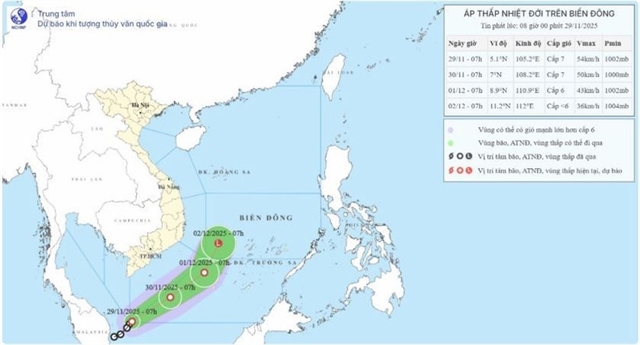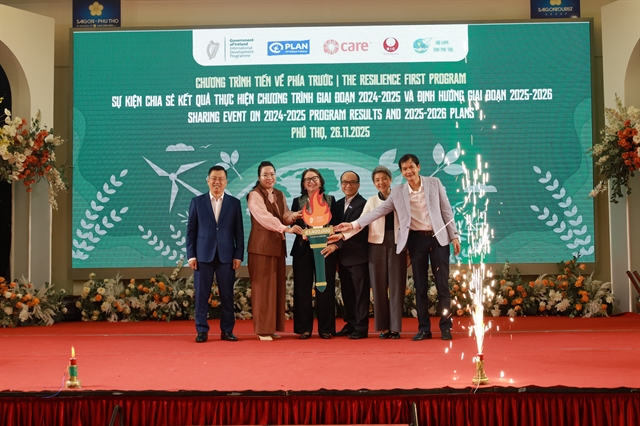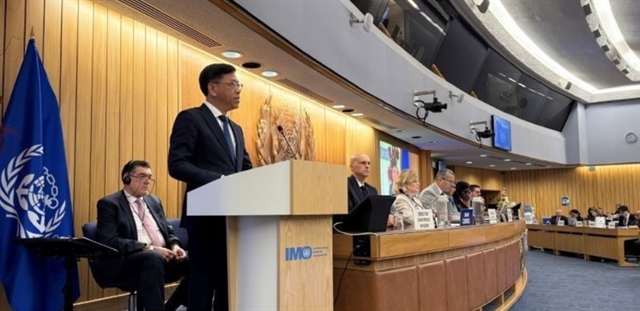 Politics & Law
Politics & Law

The Public Administrative Reform (PAR) Index released yesterday showed Quảng Ninh the top province in terms of administrative reform, sharing the leading position with the State Bank of Việt Nam. Meanwhile, the health ministry and planning ministry dropped rankings.
 |
| Quảng Ninh Province Centre for Planning, Fair and Exhibition is the common hub of exhibitions on te province's socio-economic achievements as well as the venue of domestic and international trade events. — VNA/VNS Photo |
HÀ NỘI — The Public Administrative Reform (PAR) Index released yesterday showed Quảng Ninh the top province in terms of administrative reform, sharing the leading position with the State Bank of Việt Nam. Meanwhile, the health ministry and planning ministry dropped rankings.
The index was compiled by the Ministry of Home Affairs (MoHA). According to the ministry, the average score of 19 ministries and ministry-level agencies in 2017 was 79.92 per cent, with no ministries scoring below the 70 per cent mark and 12 out of 19 scoring above the average level.
In 2017, Việt Nam central bank scored 92.36 per cent for its efforts in administrative reforms, successfully holding on to the first place three years in a row, with a slight drop (0.32 per cent) in the final score compared to 2016, however.
Nine ministries saw increased scores in 2017, including the Ministry of Justice, Ministry of Trade and Industry, the Ministry of Agriculture and Rural Development and the Ministry of Labour, Invalids and Social Affairs, which made the biggest gain (8.09 per cent) compared to 2016.
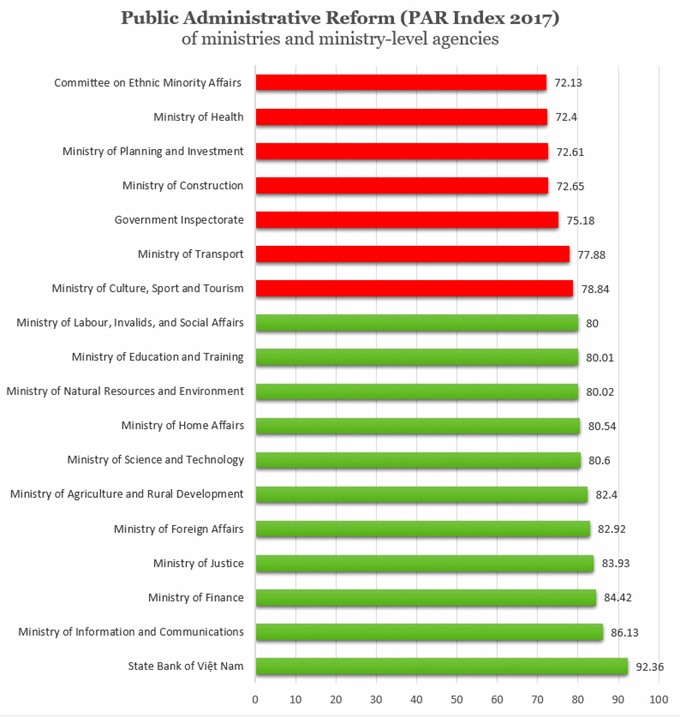 |
| Public Administrative Reform (PAR Index 2017) of ministries and ministry-level agencies. Source: Ministry of Home Affairs. — VNS Infographic Trọng Kiên |
The Ministry of Health in 2017 dropped from 11th place to the near-bottom 18th with a score of 72.40 per cent. The Ministry of Planning and Investment also saw a decline in its ranking, from its 9th position in 2016 to 17th in 2017.
Scoring last among the 19 ministries rated was the Government Committee on Ethnic Minorities’ Affairs with a paltry 72.13 per cent.
Phạm Minh Hùng, head of the Administrative Reform Department, under the MoHA, said that some common gripes that citizens have against ministries are failure to make public their administrative procedures and administrative processing delays, with surveys indicating a satisfaction of merely 70.05 per cent.
On the bright side, Hùng noted that this year, the ministries have been more receptive when dealing with complaints and have managed to better control the promulgation of administrative procedures.
Localities index
The northern coastal province of Quảng Ninh soared from the 6th position last year to top this year’s administrative reforms index, scoring an impressive 89.45/100. The score outstripped several centrally directed cities like Hà Nội (85.46), HCM City (83.50), and even taking over Đà Nẵng (84.40) – previous holder of the title.
Quảng Ninh also led the country in terms of public and businesses’ satisfaction with administrative procedures.
The south-central province of Quảng Ngãi ranked last in the chart, with only 59.69 per cent. It shared the bottom positions with its neighbouring province Bình Định, the central province of Thanh Hoá, and Bến Tre and Trà Vinh in the Mekong Delta region.
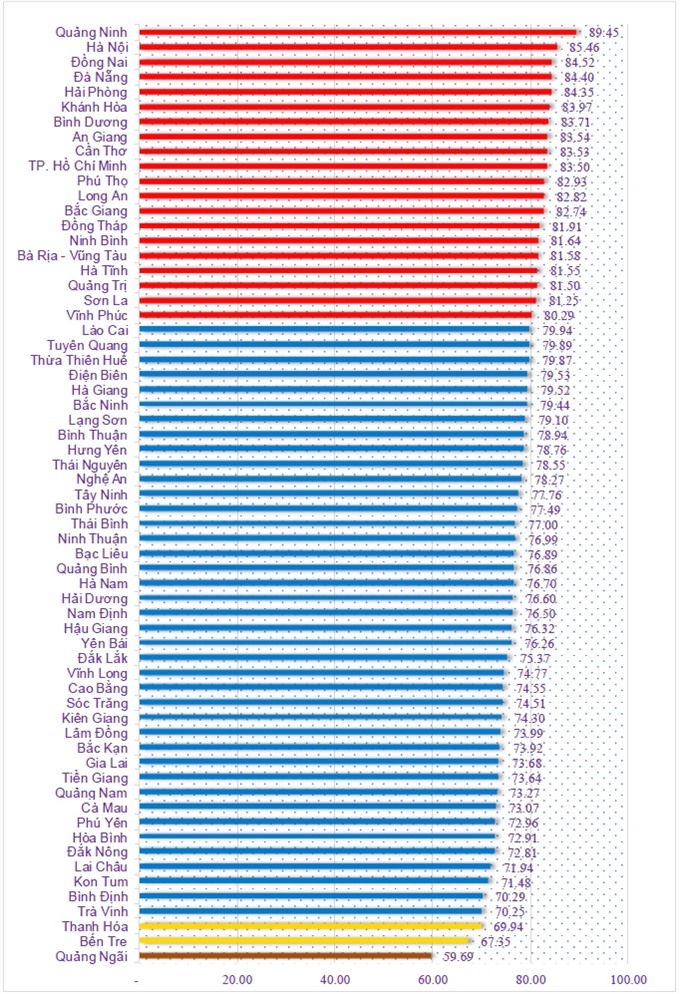 |
| Public Administrative Reform (PAR Index 2017) of provinces and cities in Việt Nam. — Infographic by the Ministry of Home Affairs. |
Deputy Prime Minister Trương Hoà Bình asked that ministries and local governments “take into account the annual PAR index to implement changes” and enact “specific measures” to address areas in which they scored low.
Bình also reminded high-ranking local governments and ministries in this year’s report not to be “complacent with their achievements”.
He urged the home affairs ministry to continue studying the report’s assessment criteria “to accurately reflect the impacts of administrative reforms in the country’s socio-economic development.”
First unveiled in 2012, the PAR Index is an annual report to assess the implementation of administrative reforms in all ministries, sectors and localities in Việt Nam, part of the Government’s commitment to “build a democratic, clean, strong, professional, modernised, effective and efficient administration embedded with the rule-of-law principles under the Party’s leadership and to develop a team of civil servants and public officials who are appropriately qualified to meet the demand of the nation’s course of development.” — VNS

